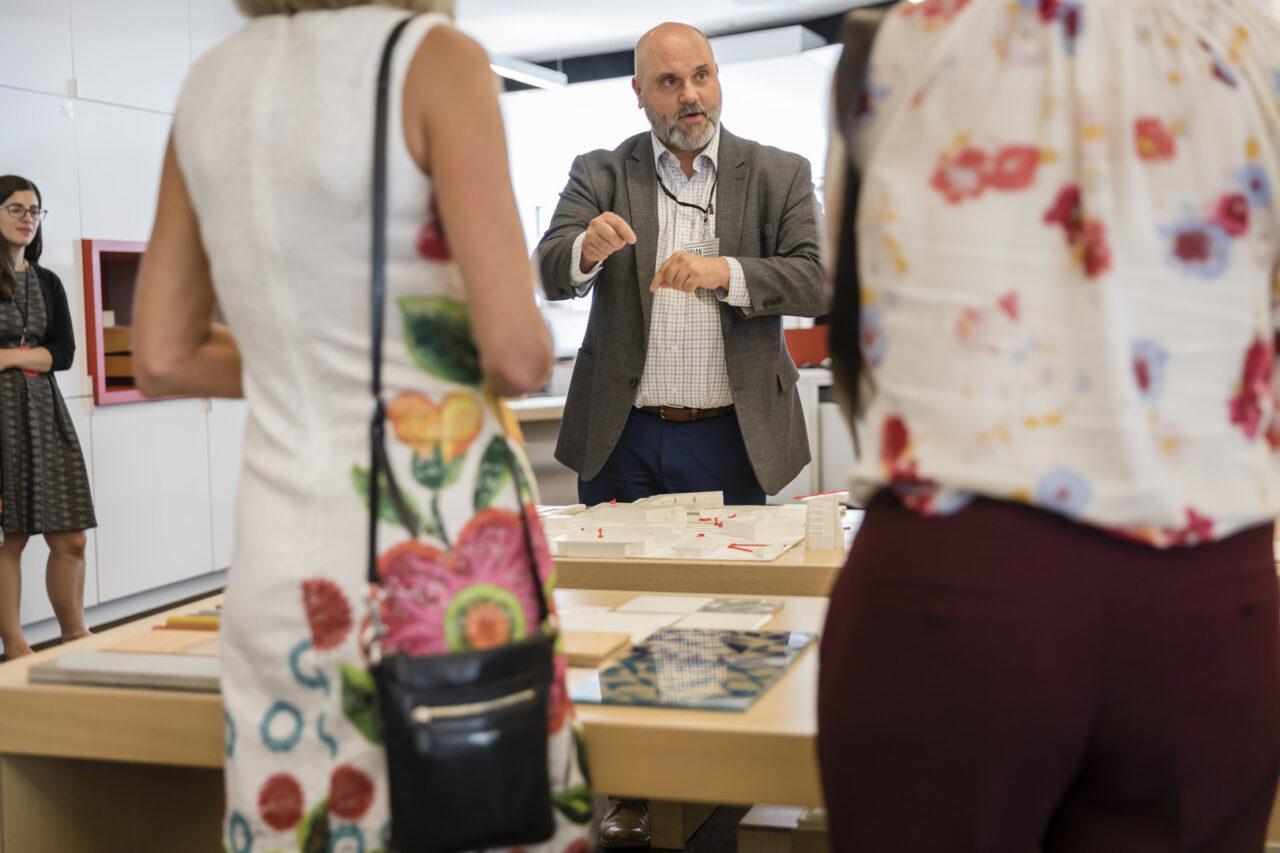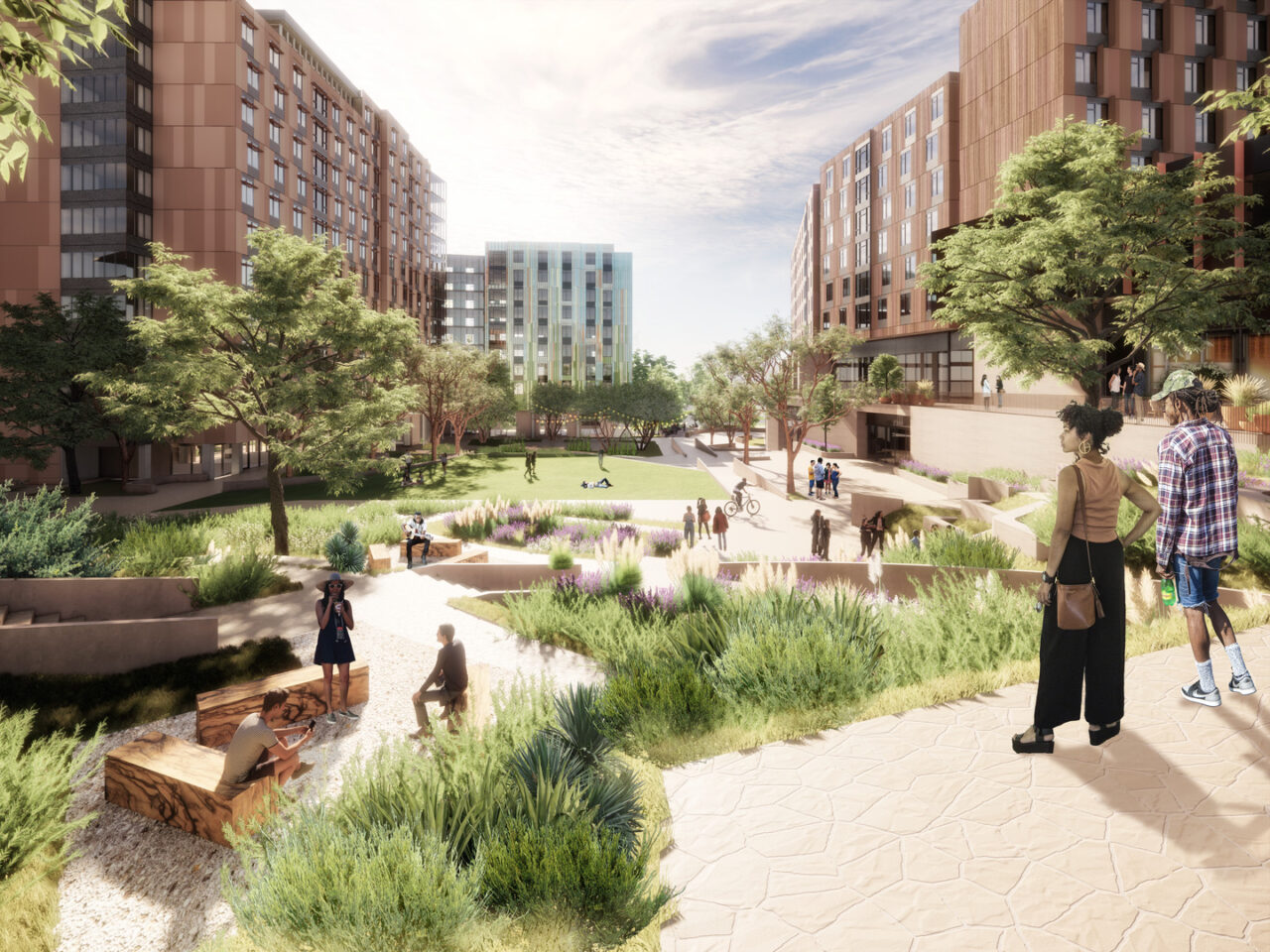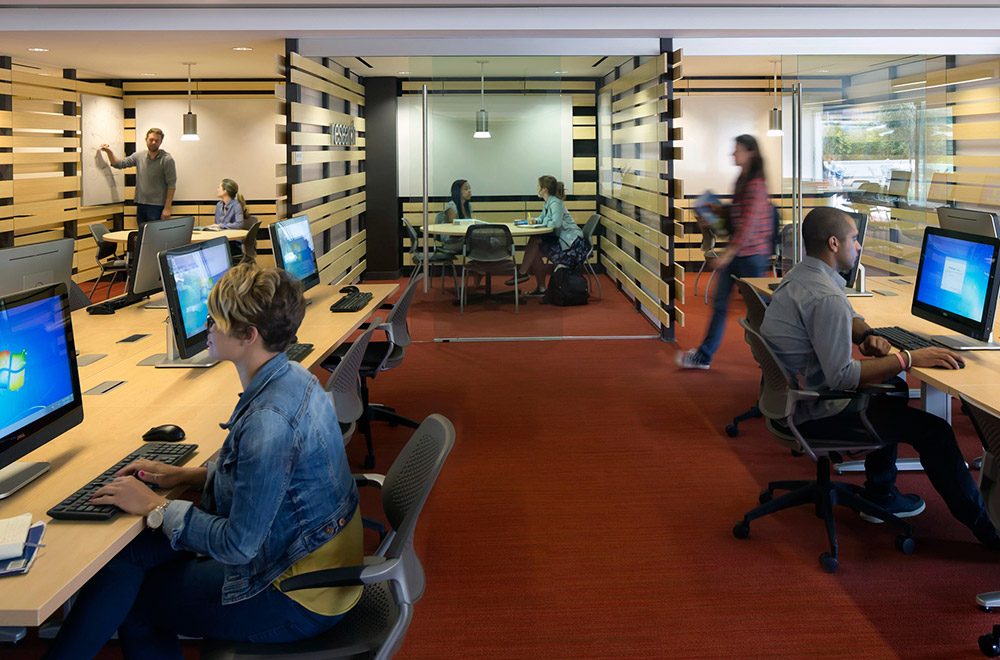Welcome to HMC Architects’ Five in Focus blog series, where we explore the latest trends, ideas, and innovations shaping the future of architecture and design. This series asks our design professionals to tell us what’s capturing their attention and offer some insights.
Brian Nichols, AIA, is a design principal at HMC. Here, he shares his thoughts on democratizing architecture, equitable access to greenspace, adaptive reuse, ornamentation, and the return to analog.
1. Architecture for Everyone
Democratizing design is about breaking down barriers and ensuring that architecture is not a privilege but a universal right. It’s about recognizing that great design can elevate communities and transform lives, regardless of socio-economic status or geographic location. By championing accessibility in architecture, we can create inclusive spaces that foster a sense of belonging and promote social cohesion. Every building should strive to embody the principles of good design, marrying aesthetic appeal with functionality to enhance the human experience. As architects, it’s our responsibility to advocate for equitable access to well-designed environments and to harness the transformative potential of architecture for the betterment of society.

2. Equitable Access to Greenspace
Equitable access to greenspace is not just a matter of convenience; it’s a fundamental issue of social justice and public health. The disparities in greenspace accessibility across our neighborhoods and schools are stark reminders of systemic inequities that deprive entire communities of the therapeutic benefits of nature. From lacking public parks to barren schoolyards devoid of greenery, these shortcomings diminish quality of life and exacerbate environmental challenges like the heat island effect. We must address these disparities with urgency and commitment, ensuring that everyone, regardless of their background or zip code, has equitable access to greenspaces that promote well-being, foster community connection, and contribute to a healthier, more resilient urban landscape.

3. Adaptive Reuse
As Carl Elefante aptly stated, “The greenest building is one that is already built.” Today, as a wave of institutional and school structures from the 60s and 70s nears the end of their functional lifespan, our clients confront pivotal decisions regarding renovation, adaptation, or new construction. Regrettably, these decisions are frequently swayed by financial considerations, with public clients often opting to discard the historical significance and embodied carbon of existing structures due to the Division of State Architects’ (DSA) stringent interpretation of building codes. We must prioritize adaptive reuse, recognizing the sustainability and cultural value inherent in preserving and repurposing existing buildings.
4. The New Ornament
In his insightful book, “The Nature of Ornament,” Kent Bloomer reminds us of the enduring cultural significance of visual ornamentation, which has adorned objects for millennia. Despite experiencing a downturn in reputation during the twentieth century, ornamentation is experiencing a renaissance in the modern era, thanks to technological advancements such as 3D printing, computer-assisted routing, and laser/waterjet cutting. These innovations empower architects and designers to reintroduce patterns, visual textures, and meaningful details into the built environment, enhancing the experiences of its users and revitalizing our connection to architectural beauty and craftsmanship.

5. The Return to Analog
The architectural profession is experiencing a notable shift back to analog methods in an era dominated by digital technologies and data-driven design. While computer modeling has undoubtedly revolutionized our approach to design, there is growing recognition that we may be losing touch with foundational skills that have long defined our craft. Embracing physical models and hand drawings not only reconnects us with the tactile essence of the creative process but also serves as a vital reminder of the artistry inherent in architecture. These analog tools, often overlooked in favor of their digital counterparts, remain indispensable in the architect’s toolkit, offering unique perspectives, fostering more profound engagement with design concepts, and enriching the collaborative process between architects, clients, and stakeholders. As we navigate the complexities of modern architecture, let us not forget the timeless value of analog techniques in shaping tomorrow’s built environment.

